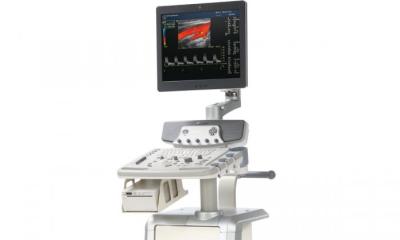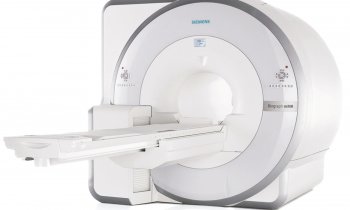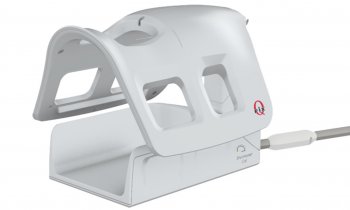PET-CT for radiation therapy planning:
We are pleased to introduce...
a new series organised by Prof. Stefan Schönberg of the Institute of Clinical Radiology and Nuclear Medicine (IKRN), University Hospital Mannheim, Medical Faculty Mannheim, University of Heidelberg.
For the first article in his series, Prof. Schönberg invited
colleagues at Mannheim and partners at Ohio State University, USA, for a roundtable discussion on:
For individualised radiotherapy, high-precision delineation and characterisation of the tumour is critical. If highest radiation doses are delivered in a targeted fashion, the chance of tumour cell kill increases and tumour control probability is enhanced.

Precise delineation of the target in its anatomical/geometric and functional/biological aspects has long been a great dilemma for radiation oncologists. Traditionally, large margins were added to the tumour volume to account for uncertainties of tumour visualisation and target delineation. This results in a high risk of ‘collateral damage’ to healthy tissues – and in return the radiation dose to the tumour must be lowered, compromising the chance of tumour control.
Technological progress has enabled advances in cross-sectional imaging, molecular imaging, and 3-D reconstruction. Introduction of CT was the first key development towards modern 3-D radiotherapy planning. Additional information from other imaging modalities such as magnetic resonance (MR) imaging, MR spectroscopy, or PET, has further improved the target volume definition process by providing better soft tissue contrast or physiologic information. Parallel innovations in radiation therapy technologies enable millimetre-precision with the introduction of stereotactic techniques and online 3-D image-guided radiation therapy (IGRT) based on linac-mounted Cone Beam CT systems. These parallel innovations have brought the fields of radiation oncology and radiology, which had drifted apart in the past decades, together on a novel level. Today, radiation oncologists are able not only to see the tumour but also treat the tumour with highest precision for each individual patient.
However, despite 3-D CT-based planning, the definition of target volumes has still remained a highly subjective process, as shown by several ‘inter-user’ target volume definition studies. This is likely related to inherent uncertainties in tumour margin definition by anatomical imaging modalities that frequently do not adequately delineate the biologic/physiologic tumour target.
PET as a functional imaging modality adds critically to the existing panel of imaging methods. PET provides physiological information of tissue and tumour metabolism. Increased FDG uptake indicates areas of higher glucose metabolism, which is characteristic of uncontrolled growth of tumour cells. However, PET alone lacks correlative anatomical information. Conversely, CT lacks this physiological information but provides superior definition of anatomical detail, tumour localisation and tissue density. The ‘marriage’ of the two modalities as a PET/CT provides combined imaging acquired at the same time without patient motion and is superior to either PET or CT imaging alone.
This allows incorporation of biological, molecular, and pathophysiological parameters directly into the radiation therapy algorithms. Incorporating these principles has several aspects for the therapy algorithm, that all build on each other: Proper staging, anatomical and molecular target delineation for radiation therapy planning and image-guided treatment, treatment adaptation, and outcome prediction, and treatment adaptation based on outcome predictions during or after therapy (Fig. 1).
Ample evidence has now accumulated that lung tumour delineation can be significantly refined by the use of PET/CT compared to CT alone, and impact treatment planning in half of patients. Improved delineation of the target volume by PET CT reduces the target volume in approximately one fourth of patients, especially for lesions masked by non-cancerous tissue (fibrosis or atelectasis), that is very challenging to differentiate from tumour by standard imaging. Reducing the target volume permits a decrease in the radiation dose to dose-limiting normal tissues (lung, spinal cord, oesophagus), and provides the opportunity to escalate the radiation dose for better tumour control. Conversely, an increase in the target volume based on PET/CT occurs in about one fourth of cases, where PET/CT identifies tumour involvement that is not evident by CT alone.
Integrating PET-CT into the radiation therapy planning process has the potential to reduce risk for inadequate coverage of the tumour within the radiation ports (‘geographic misses’), and reduces inter-user variability in target definition. The higher precision in delineating tumour extent, and excluding non-cancerous tissues, open the door to dose escalation to the tumour while omitting large margins or ‘elective’ target volumes. Radiobiologic modelling studies of such dose escalation in stage N2-3 lung cancer have estimated an increase in tumour control probability by 13-18% - surpassing the gains achievable by many adjuvant therapies.
Similarly, in head and neck cancer, target delineation through PET/CT fusion has shown benefit. Initially used to assess tumour response and guide management of involved cervical lymph nodes after radiation therapy, the technique of co-registration has evolved to PET/CT-guided intensity-modulated radiation (IMRT). This enables selective intensification of the radiation dose (‘dose painting’) in tumour sub-regions that are most metabolically active or in hypoxic areas using 18F-MISO PET/CT as a hypoxia tracer.
Now that PET/CT planning is becoming established in lung, head and neck cancer, other tumours, such as gastrointestinal, anal carcinoma, prostate carcinoma, lymphoma and gynaecologic tumours are also being studied. For example, at initial diagnosis of anal carcinoma, 15-39% of the inguinal lymph nodes are involved. In the future, PET may be used as a decision tool whether to include the inguinal nodes to the target volume or not (Fig. 2)
However, the use of this new paradigm is not without challenge. Not all metabolically active areas within malignant lesions represent tumour. Inflammation and radiation-induced reactive changes can represent challenges. Although PET/CT has reduced inter-observer variability in tumour delineation and has further refined how we ‘see’ tumours in anatomical and metabolic aspects, the optimal use and the proper integration of this relative expensive technique into cancer therapy has to be further defined and long-term follow-up studies to assess the impact on ultimate therapy outcome have yet to be completed. This novel approach holds the promise to improve cancer care in many malignancies. Its effective implementation will bring us closer to a Personalised Radiation Medicine approach in cancer therapy.
For more details on this topic see our upcoming Symposium:
www.mr-pet-ct.com
01.03.2008











